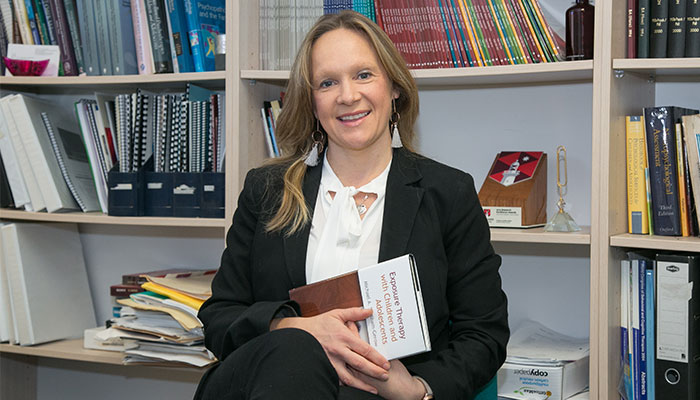In Too Much and Never Enough, Donald Trump’s niece Dr Mary Trump writes that his toxic positivity is a family trait, learned from his father. According to Dr Trump, a clinical psychologist, toxic positivity is seen when we keep saying “everything’s great!” even in the face of irrefutable evidence that everything is not great at all.

Mr Perfect: US President Donald Trump has to pretend that he has done everything right, his niece Mary Trump writes in her biography of her uncle.
It is a trait that has come to characterise the Trump presidency.
"Donald learned that you can never admit you're wrong,” she writes. “It’s a kind of toxic positivity, there was no admitting pain, there was no admitting weakness … he has to pretend that he's done everything right, and everything is going perfectly, and this will just disappear, and everything's going to be fine."
A step beyond “unrealistic optimism”, which has been researched by psychologists, toxic positivity is insincere positivity or an overly positive bias. It can kill creativity and empathy and encourage the idea that feelings of sadness are not OK, leading to misunderstandings, harm and suffering.
It can be just as toxic as negativity.
Social media can be a breeding ground for toxic positivity, because the unrealistic depictions of picture-perfect lives can leave us feeling like we need to be happy all the time.
Our emotions signal what is important to us. Toxic positivity dismisses people’s real experiences.
In cognitive behavioural therapy for anxiety and depression, people are encouraged to be realistic with their negative thoughts. When our rights are violated, we should feel angry; when we lose someone close to us, we should feel sad; when our lives are threatened, we should feel scared. They are important primary emotions that we should experience, they help keep us safe and reinforce our connections with people.
How is toxic positivity different from genuine optimism?
In terms of mental health, the way that you interpret the world is very important. Psychologists talk about a negative or a positive bias and try to encourage people to be more realistic and balanced.
In her book Rainy Brain Sunny Brain, academic Elaine Fox talks about 'realistic optimism' and argues that a healthy mind is a good balance between pessimism and optimism.
Usually this means encouraging people to be more positive as most people with depression or anxiety tend to have a negative bias, and optimistic people generally tend to have better outcomes in the long term.
However, when positivity gets so extreme that it’s ignoring and dismissing other people’s experiences, there are some toxic outcomes. If you are looking at things in a positive way all the time, you are not necessarily assessing threats realistically or bringing balanced thinking to a situation.
What are some examples of toxic positivity?
Social media can be a breeding ground for toxic positivity, because the many unrealistic depictions of picture-perfect lives can leave us feeling like we need to be happy all the time.
Throughout COVID-19, we have seen Trump saying things that aren’t true. People are dying but he’s not taking action because in his view, everything is great.
In parenting, toxic positivity can cause long term problems. When parents want so desperately for their kids to be happy that they ignore negative emotions (“don’t be sad”, “don’t be angry”), the children can develop an incapacity to sit with reality.
They are not taking risks, connecting with people, building resilience or learning that life can be hard and there will be times when they feel sad or things don’t go as planned.
Is toxic positivity dangerous?
Throughout the COVID-19 experience of Trump, we have seen him saying things that aren’t true. People are dying but he’s not taking action because in his view, everything is great.
In the medical field, this attitude can also be dangerous. For example, there’s that idea that you can fight cancer or other serious medical conditions with positive thinking. So patients may decline traditional medicine in favour of positivity and meditation, which sets them up for failure. It also makes people who are not recovering from cancer think: “If only I’d been more positive, I could have saved my kids this grief.”
- Study highlights Anglo-Celtic dominance of our TV news
- How universities can help fill the skill gap in Australia
Another side-effect is where we deny others the experience of sitting with them in their negative emotion. If your friend is experiencing something horrible and you say, “all you need is to be positive’’, that’s the last thing they want to hear. Rather than push them out of it, they want, “yes, this sucks and I’m here with you”.
Because it’s not presenting an authentic representation of what’s going on, toxic positivity makes people experiencing what is real feel alienated and abnormal. If people view negative emotion as a weakness, they won’t share their experience or seek help.
How do you deal with someone exhibiting toxic positivity?
In therapy, we encourage people to have a more balanced view. We ask questions: what actually happened, what’s the evidence, what’s really going on? We explore the facts. Which is something Trump does not like to do.
It’s not ideal for them, either. If they are a lucky person and nothing negative ever happens, they could continue living in that bubble, and even if they do experience negativity, they can interpret it in a totally positive way.
But most of the time, when they do experience something negative, it’s likely to be even harder to deal with.

Jennie Hudson (pictured) is a Professor in Macquarie University's Department of Psychology and Director of the Centre for Emotional Health.



